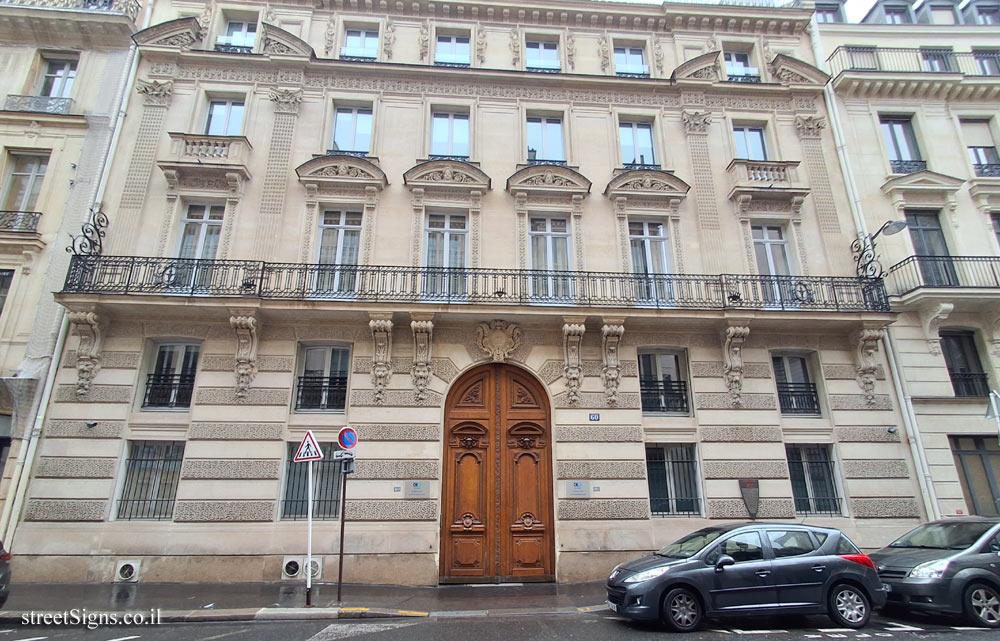One of the series of signs describing historical places in Paris. The signs were placed starting in 1992 and are also called sucettes Starck (Starck’s Lollipops) after Philippe Starck who designed them.
The plaque depicts the house where personalities lived, including Napoleon Bonaparte
The place (the house no longer exists) was photographed on the same day
 Click for a larger image
Click for a larger image This sign is different from the other signs in the series: it is not on a pillar, and it does not have the symbol of the municipality of Paris and the inscription Histoire de Paris
Translation of the text on the sign:
[Illustration of the place]
The Chantereine Hotel If today nothing remains of the Chantereine hotel, destroyed in 1862 during Haussmann’s major works, the people who lived there and those who frequented it have left their mark on the history of France. an indelible mark, from the end of the Ancien Régime to the dawn of the First Empire. Julie Careau, "demoiselle de l’Opéra" then making a profession of gallantry, moved there in 1780. She held one of the most popular salons in Paris, where she welcomed Talleyrand, Mirabeau and Chamfort, and the tragedian Talma , whom she married in 1791. The hotel soon became the preferred meeting place for members of the Girondin party, many of whom, such as Brissot or Madame Roland, ended up under the guillotine or committed suicide, like Condorcet, in the dark hours of terror. In 1795, Julie, abandoned by Talma, rented her hotel to the citizen Joséphine de Beauharnais, widow of the general in chief of the Army of the Rhine who had been beheaded a year earlier. Through her friend Barras, Joséphine met the young “General-Vendémiaire”, Napoléon Bonaparte, whom she married in 1796, just before he left to cover himself with glory during the Italian campaign. On his return, Napoleon bought the Hôtel Chantereine from Julie. He resided there with Joséphine until November 15, 1799: having become First Consul of the Republic after his coup d’état of 18 Brumaire (November 9), he moved to the Luxembourg Palace.

 Click for a larger image
Click for a larger image  Click for all signs belonging to The History of Paris (Starck's Lollipops)
Click for all signs belonging to The History of Paris (Starck's Lollipops)
 201 Meter |
201 Meter |  224 Meter |
224 Meter |  238 Meter |
238 Meter |  278 Meter |
278 Meter |  301 Meter
301 Meter